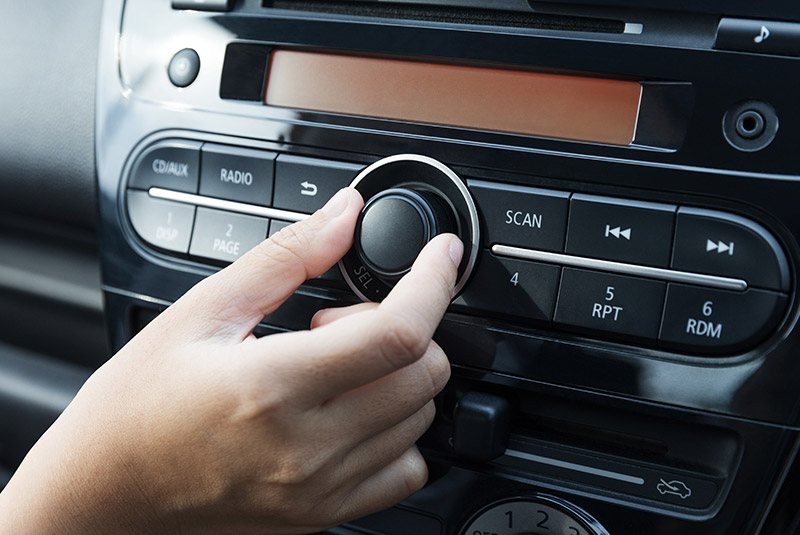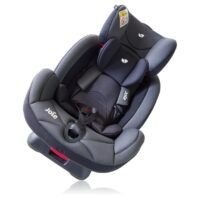Motorists install advanced stereo systems to enjoy accurate sound reproduction of their favorite music and radio stations. This includes high-fidelity and zero sound distortions. But certain installation errors and damages can affect the speaker’s performance which reduces the driving experience for most motorists.
Why car speakers sound distorted is simply an alteration of the waveform of the audio which is a result of audio generated from low-quality sources, such as a phone. Still, there are several other reasons why your car speakers sound distorted. Increasing drivers such as volume and bass may also cause sound distortion.
This article addresses all the causes of car speaker distortion and their solutions. Keep reading to discover how to enjoy distortion-free, high-fidelity music.
Table of Contents
10 Causes and Ways To Stop Car Speakers Sound Distortion
Solving sound distortion in-car speakers only requires a minor tweak or the purchase of pocket-friendly equipment to help enhance sound output. Below are the causes of sound distortion and how to solve it.
-
Enable High Pass Filter
Motorists should enable the high pass filter in their vehicles to guarantee distortion-free music and radio content. The front and rear speakers located in the car door are not made for bass.
They are made with small cones which makes it hard for bass to pass through. Enabling the high pass filter reduces the level of bass in these speakers below 80Hz. This guarantees clear audio fidelity audio.
-
Don’t play bass boosted music
Bass boosted music is part of pop culture and is one of the most played types of music in all audio systems. You can find it everywhere from the internet to radio and TV stations.
However, bass boosted music is notorious for causing at both high and low frequencies. What’s worse is that bass boosted music may make your amplifier and expensive audio system seem inefficient.
For example, bass boosted music may override your unique amplifier settings causing distortions. Bass boosted music will keep causing distortions unless you find a lasting solution. Avoid music boosted with software like Audacity. Play original music from online streaming platforms and CDs.
-
Connect an equalizer to your audio system
Advanced cars are now being designed and equipped to fulfill multiple functions at a time. However, they are expensive, luxurious, and rare. Most reasonably-priced cars don’t have the environment to produce great sound, thereby reducing motorists’ expectations.
Also, car sound installation is usually not the best. Speaker placement options are limited and DYI means motorists will make simple mistakes.
Your car is thus not the best place to listen to new music as it reduces sound quality. You can test this by listening to the same music in your car and elsewhere. Installing an equalizer complements your car’s interior.
This is an advanced audio solution that ensures accurate sound reproduction. The bass, treble, and bass filters smoothen audio production. Depending on the size, you can easily mount it on your dashboard or receiver. Install a sound processor as a tool for frequency peak reduction to guarantee high-quality sound.
-
Tweak bass frequency at high and low levels
Bass is the number one cause of distortion. Before advancing to other solutions, it is crucial to exhaust all the ways bass can cause distortion and the solutions to apply. By tweaking bass levels on your stereo, you can eliminate distortion.
But distortion-free audio at a level will cause distortion when the volume changes. For example, +10 bass and -5 treble will produce distortion-free audio at a low volume but will create sound distortion in high volumes.
This makes it impossible to adjust your volume while driving. Motorists have to bear with low audio volume even in heavy traffic. Sometimes, motorists simply switch off the stereo or switch to a different genre. However, by simply mounting an extra subwoofer in your car, you can adjust the sound output.
-
Install an Amplifier
While car stereos are equipped with good sound output, amplifiers are dedicated sound equipment that improves the quality of sound. An amplifier guarantees motorists of cleaner sound output.
Amplifiers can be added to the car stereo as an accessory. Motorists are investing in car amplifiers as the difference in sound outputs is vastly huge. Amplifiers can be adjusted to match the individual taste and increased to immerse drivers in the experience. As for distortion, motorists simply have to reduce the stereo volume and simultaneously increase amplifier volume.
-
Use a Crossover
Frequency filters and preamp speakers create distortion-free audio. Enable high pass filter on the subwoofers to achieve maximum results on both low and high volumes.
-
Adjust Amp Gain
The gain button is one of the most abused buttons on amplifiers. Motorists are constantly tuning it up and down to achieve different volume levels. While it may increase audio output, the amp gain button controls the amplifier’s input signals.
Tuning it changes the level of signal input, thereby, causing distortions at high volumes. Luckily for motorists, there is a way to adjust amp gain to avoid distortion. Simply tune the volume to ¾ and adjust the gain button until the distortion disappears.
Invest in High-Quality Music Platforms
With music being everywhere on the internet, it is tempting to opt for a cheaper or even free solution. However, most audio files from free websites are low quality and will distort at both low and high levels. Avoid compressed music and invest in high-quality music.
If you love listening to the radio, then invest in satellite radio or find clear terrestrial radio stations. Streaming platforms like Apple and Spotify offer high-quality music at a cheap price after a complete package free trial.
Switch to high-quality music and you’ll find great satisfaction even with a cheap car stereo system.
-
Install Speaker Baffles
Speaker baffles are sound-deadening materials that also reduce in-car sound distortion. Speaker baffles can be easily installed in your door speakers. However, make sure you remove the door panel with the right tool to avoid damage to the speaker and car door.
-
Invest in New Advanced Car Speakers
Factory-installed speakers can only do so much. Advanced aftermath speakers are equipped with good power and output to produce clear distortion-free audio. These speakers are reasonably priced but will make a huge difference in your audio system.
How Do I Know If My Speaker Has Blown Out
Blown-out speakers reduce the music experience for motorists. But not everyone can identify the signs of a blown-out speaker, making it impossible to diagnose and implement a corresponding solution. Let’s take a look at some of the signs of a blown-out speaker and how to rectify this problem. Full blown-out speakers however won’t produce any sound output.
-
Sound Distortion
When distortion is not caused by any high volumes, bass, or poor audio source, the problem is usually narrowed down to blown-out speakers. A blown-out speaker will produce distorted sound even from high-quality music and music platforms.
You can test for distortion by playing a CD. Other similar symptoms include hissing and fuzziness. Isolate the blown-out speaker by disconnecting each speaker until you find the culprit. You should replace the speaker with an advanced aftermarket car speaker immediately to avoid further sound distortions.
-
Popping or rattling
Blown-out may not produce audio at all, but instead, produce a popping or rattling sound. If this is all you hear, then your car speakers are blown.
-
No bass, treble, or mid-tone
Bass causes distortions, however, the absence of bass can be a symptom for something more severe; damaged speakers. However, it may simply be due to a worn-out stereo system. Install a car equalizer and if you still can’t hear the bass, treble, or mid-tone, your best option is to replace your speakers.
Before checking your speakers for damage or investing in an amplifier and equalizer, make sure the distortion isn’t coming from other sources. Switch off the other components of your car and if the distortion disappears, it means you’re dealing with a noisy component that needs fixing.







